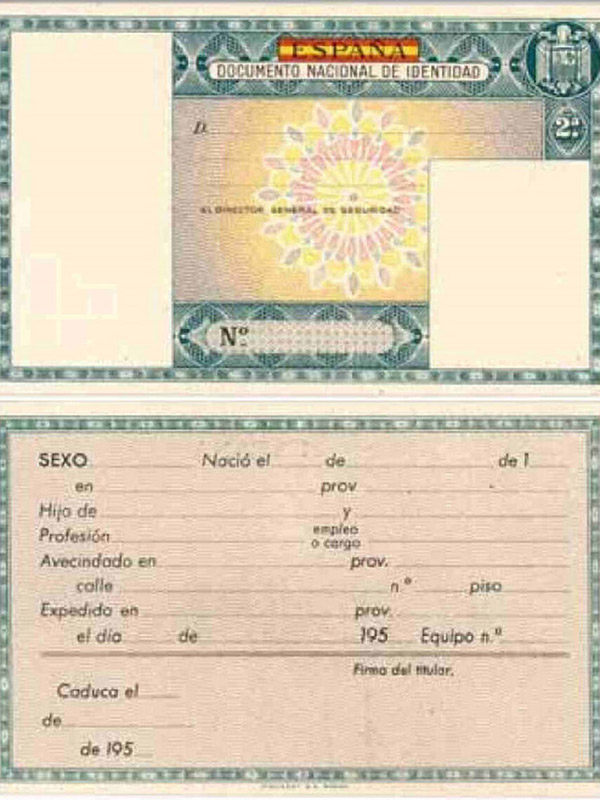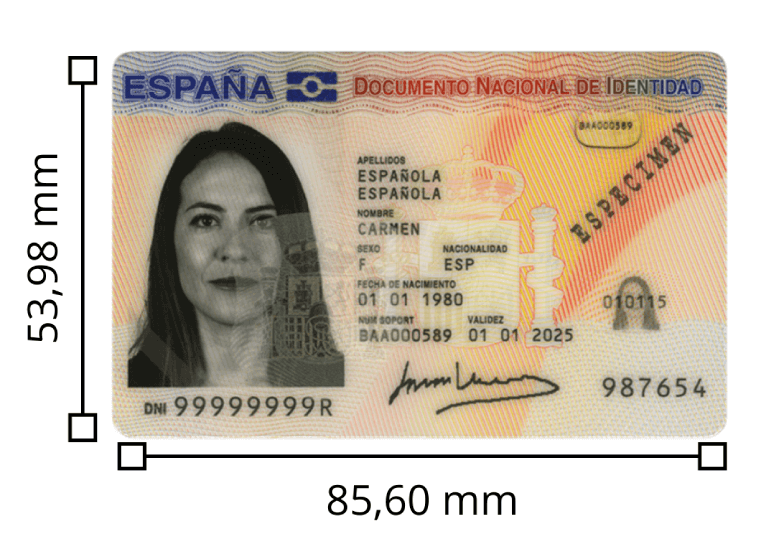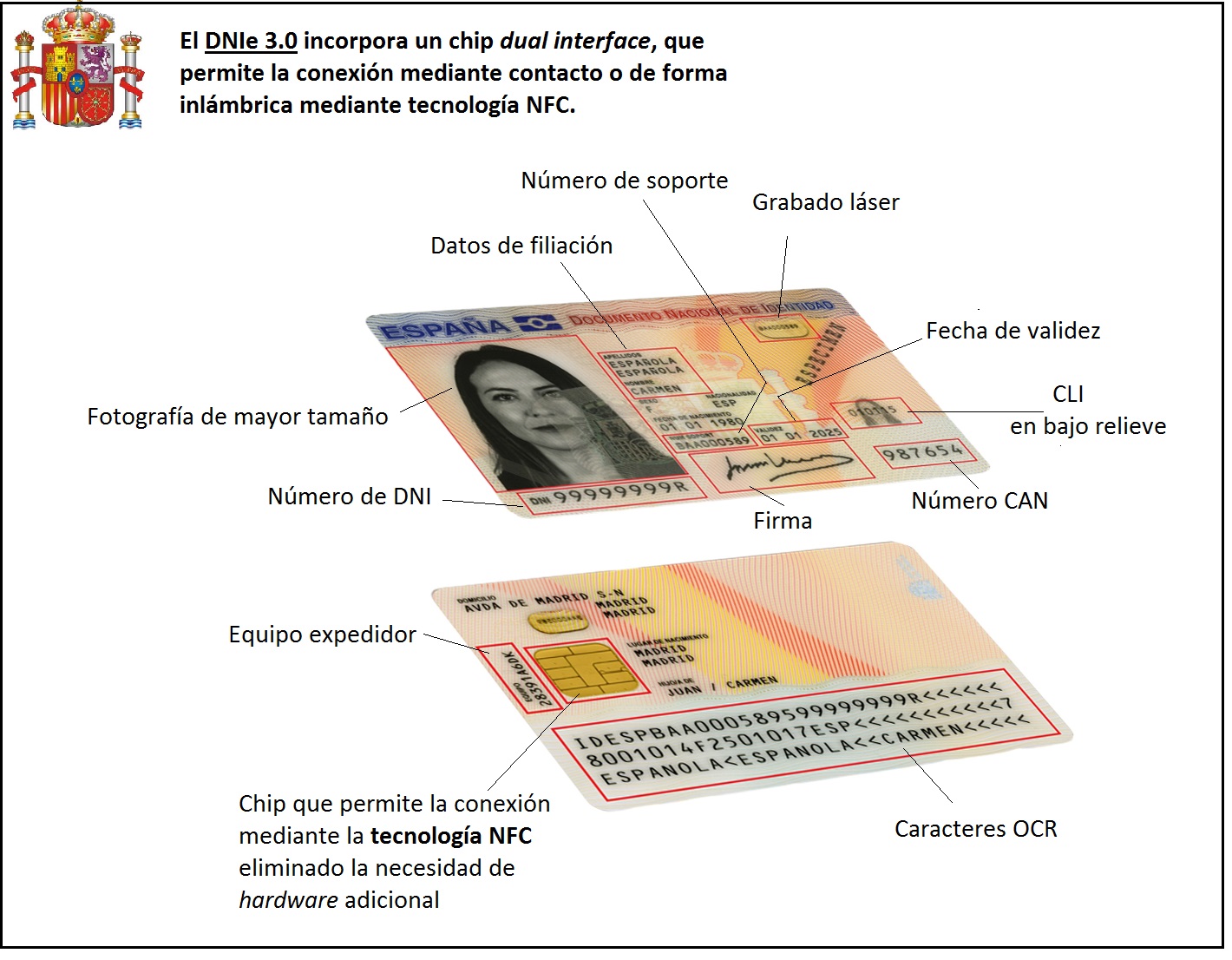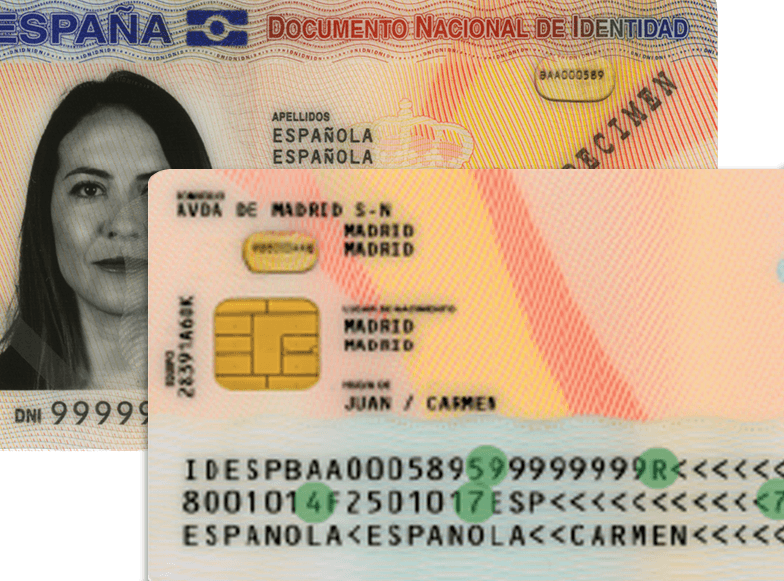We use the NID (National Identity Document) as the main mechanism to identify us before any public organism or authority, we daily take it everywhere inside our wallet and the great majority of us don’t really know which version of the Spanish ID Card are carrying, the potential of using it, the meaning of some fields like the MRZ or even the security measures that they incorporate (laser marks, holograms).
Would you like to know better our Spanish national identity card in the year of its 75th anniversary? so keep reading, we explain these questions in the following article.
Spanish ID Card
The Spanish ID card is a personal and non-transferable document that becomes mandatory at the age of 14, and all spanish citizens are entitled to obtain it.
Furthermore, individuals required to possess it must be able to present it to relevant authorities upon request. In cases where it is not immediately available, alternative official documents such as a driver’s license or passport may be presented.
Validity of the Spanish ID Card
The Spanish ID card is valid for two years for children under five, five years for individuals under thirty, ten years for those under seventy, and is permanent for those over seventy.
Beginning at the age of 30, and exceptionally, it may be granted permanent validity for citizens able to provide evidence of permanent disability. Once each validity period has expired, citizens must renew it.
A little bit of History: Evolution of the Spanish ID card
The current Spanish ID Card was born during the Franquist dictatorship on March 2, 1944, after 150 years of using other types of documents to identify people such as identity cards or interior passports that lacked a photograph so they had written on them the description of the person. A curious fact is that for the design of this unitary document a contest was carried out with 30,000 pesetas for the chosen sketch.
![]() On 20 March 1951, the first Spanish ID Card was issued to a normal citizen (as you can imagine, card number 1 was for Franco, 2 for his wife and 3 for his daughter). Numbering from 10 to 99 are reserved for the Royal Family while 13 is discarded for superstition)
On 20 March 1951, the first Spanish ID Card was issued to a normal citizen (as you can imagine, card number 1 was for Franco, 2 for his wife and 3 for his daughter). Numbering from 10 to 99 are reserved for the Royal Family while 13 is discarded for superstition)
![]() On 20 March 1951, the first Spanish ID Card was issued to a normal citizen (as you can imagine, card number 1 was for Franco, 2 for his wife and 3 for his daughter). Numbering from 10 to 99 are reserved for the Royal Family while 13 is discarded for superstition)
On 20 March 1951, the first Spanish ID Card was issued to a normal citizen (as you can imagine, card number 1 was for Franco, 2 for his wife and 3 for his daughter). Numbering from 10 to 99 are reserved for the Royal Family while 13 is discarded for superstition)

Until July 12th, 1990 there were up to 5 versions of the Spanish ID card, but in that year appears the first computerized ID card of the Spanish history, model that was in force 16 years in which it suffered several modifications. In 2006 the first electronic ID card was launched allowing to carry out managements or administrative proceedings with the Administration in a telematic way.
Types of current electronic identity cards
In the first computerized ID card (1990) there was no fingerprint and only two OCR (Optical Character Recognition) characters’ lines. The second version had a colour photograph and added the third OCR line, while the third computerised ID card added a line with the Spanish ID (IDESP) and the sex section was set to MF (female) and V-M (Male). In 2006, the first electronic ID card incorporating a chip appeared.
First electronic ID Card (2006 -2015)
First ID card incorporating CHIP, turning the Spanish ID Card into an electronic document. It is a polycarbonate card engraved with a laser, with the same measurements as a conventional credit card. It allows the connection to telematics services, through a card reader connected to the computer. The fact of needing specific hardware such as a card reader and having to install computer drivers caused very few citizens have used it to make formalities through its chip.

Spanish ID CARD 3.0
DNIe 3.0 in expedition since 2015. The main difference with respect to the electronic identity card or DNIe 2.0 is that the chip has a dual interface that allows connection through hardware, but also wirelessly through NFC technology (Near Field Communication), present in most mobile phones and tablets. It also eliminates the need for specific hardware requiring only a mobile that has NFC and a service App to connect to.
The new electronic identity card does not have the chip on the front but on the back and has the same legal validity as the handwritten signature. In addition, it becomes the safest one in the history of Spain. Its Holograms make its forgery very complicated.
The measures of the Spanish ID Card are those established in the ISO regulations regarding identification cards, being the following:

Spanish ID Card layer structure
| 1 | Polycarbonate Overlay |
| 2 | Polycarbonate Overlay with Kinegram |
| 3 | Obverse Polycarbonate core |
| 4 | Inlet: Antenna Layer |
| 5 | Reverse Polycarbonate Core |
| 6 | Polycarbonate Overlay |
Spanish id card security measures
The current Spanish ID Card has several security measures to prevent falsification. Within the different parts of the spanish ID card we find security elements that can be divided into two types, physical security measures, and digital ones.
In the physical security elements of Spanish ID Card there are some that can be easily seen such as optically variable inks, reliefs or security backgrounds, and others that can only be observed by optical and electronic means, such as inks visible with ultraviolet light or the micro writes.
Digital security measures are based on the encryption of the data on the DNI chip, and on the need for a PIN to access the electronic DNI functionalities.
What is DNI 3.0 useful for?
Being an electronic certificate, the DNI 3.0 serves to prove the identity of its legitimate owner to anyone. (Certificate of Authentication). It can also be used as a signature certificate, as a means of certifying the integrity of a document and as a travel document in countries that accept it (it has a data structure equivalent to that of the passport). The ICAO MRTD (Machine Readable Travel Document) standard of the International Civil Aviation Organization is the most followed standard by most countries in the world in their passports and travel documents.
Meaning of DNI 3.0 fields
This image of the Spanish National Police shows what each field corresponds to. However, we will explain the most complicated ones:

CAN Number (Card Access Number)
6-digit numerical key that allows the DNI 3.0 reader to create a session key for data exchange. In other words: the only way to access the information contained in the DNI 3.0 remotely through RFID or NFC is to know the CAN.
CLI Field (Changing Laser Image)
It includes our initials (surname and first name) that change when the document is moved to show the background, which contains the document issue date.
OCR / MRZ
This MRZ (Machine Readable Zone) is composed of OCR characters, ready to be read by machines. The fields that comprise the OCR data zone are::
1.[ID] 2.[ESP] 3.[ABC123456] 4.[0] 5.[12345678Z] 6.[<<<<<<]
7.[741015] 8.[0] 9.[M] 10.[090322] 11.[6] 12.[ESP] 13.[<<<<<<<<<<<] 14.[9]
15.[DE<TAL<Y<CUAL<<FULANITO<<<<<<<]- ID: Document Type
- ESP: Nationality
- Serial number of the card carrier
- Field 3 Control Digit
- DNI number
- Stuffing
- Date of birth (YYMMDD)
- Field 7 Control Digit
- Sex (M/F)
- Expiry date
- Field 10 Control Digit
- Nationality
- Stuffing
- Control digit for fields 3, 4, 5, 7, 8, 10 and 11 concatenated
- First name
As you can see, all the major information we can find on the front of the Spanish ID Card is also in the MRZ. In addition, 4 control digits make it difficult for non-expert hands to counterfeit, as they have to know the algorithms used to calculate it.
In addition, as you can see from the description of the fields, the last digit of the second line does NOT indicate the number of people who have the same name as you, but is a global check digit, so the urban legend assuming that meaning for this digit is not true
New Spanish ID Card: DNI 4.0
(Content update: June, 2021)
The European Union, in an effort to unify the appearance and functionality of national identity documents in the different Member States, has introduced a new European ID card. The Spanish version of this new ID card, the DNI 4.0, has just been released and provides new security measures that will help to fight against identity fraud and terrorism.
In addition, there will be a mobile app where we will be able to carry the new DNI 4.0.
Do you want to know how the new Spanish DNI looks like? Discover the DNI 4.0 in this article where we tell you all the new features.
Thanks to the constant research work of our R&D+i department, we have developed a product capable of automating the scanning of an ID card by extracting all the textual information through OCR (or through NFC for the new DNI 3.0) and verifying through facial recognition that whoever presents it in a register process is its real owner.
How to Obtain the Spanish ID Card
For initial applications, individuals must schedule an appointment and appear at a National Police station with the following documentation:
- Literal birth certificate issued by the corresponding Civil Registry.
- A recent color photograph of the applicant’s face, sized 32 by 26 millimeters.
- Certificate of registration from the Council where the applicant resides.
- For ID card holders under 14 years old or individuals with legally supplemented capacity, they must be accompanied by their legal guardian.
- In cases of naturalization where the citizen possesses a Foreigner Identification Card (TIE) or Certificate of Registration as a Union Citizen, including a foreigner identification number (NIE), it must be provided as an essential requirement.
For renewal (always 180 days before it expires), individuals must present the old physical passport, a color photograph, a certificate of registration if the address has changed, and in cases of changes in filiation data, a certificate from the Civil Registry issued no more than six months ago.
If you are interested in our technology do not hesitate to contact us, and if you liked the article, share it and add value to your followers!

I’m a Software Engineer with a passion for Marketing, Communication, and helping companies expand internationally—areas I’m currently focused on as CMO at Mobbeel. I’m a mix of many things, some good, some not so much… perfectly imperfect.

COURSE
The first COURSE on Digital Onboarding
Understanding the technology before implementing it ensures that you make the most of its potential and make informed decisions that benefit both your company and your end users.
We have developed a course that brings together everything you need to know about digital onboarding. This technology is the first point of contact with your customer and defines the course of your relationship.
Capture the ID information and verify your customers with OCR/NFC technology





